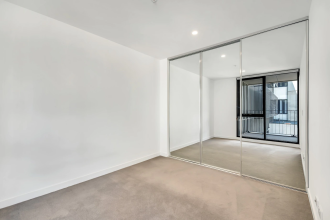In a world facing climate change, water scarcity, and expanding urbanization, the need for sustainable food solutions is more urgent than ever. One innovation rising to meet this challenge is hydroponics—a method of growing plants without soil by using a nutrient-rich water solution. By enabling cultivation in compact, indoor, or urban spaces, hydroponics is transforming how and where we grow our food.
This method isn’t just for commercial growers anymore. Individuals across the globe are turning balconies, rooftops, and kitchen corners into productive green spaces. Hydroponics offers the opportunity to grow fresh, healthy produce all year long—while using significantly less water and fewer pesticides than traditional farming.
Meet Lola Hartman: A Voice for Accessible Sustainability
At the heart of this movement is Lola Hartman, a trailblazer in sustainable agriculture and hydroponic innovation. With a background in eco-conscious design and a passion for inclusive education, Lola has become a prominent advocate for making soilless growing systems approachable and achievable for everyone.
Her journey began with curiosity and a few simple DIY setups. Today, she shares her evolving knowledge to empower others—whether they’re apartment dwellers, urban homesteaders, or curious beginners dipping their toes into hydroponics for the first time.
Practical Tips for Growing Anywhere
One of Lola’s key missions is simplifying hydroponics for everyday use. She emphasizes that you don’t need a backyard or a big budget to start growing. Her tutorials show how to convert windowsills and closets into herb havens, create compact vertical gardens, or turn recycled containers into effective planters.
Through step-by-step guides, she demonstrates how to monitor water pH, balance nutrients, and build affordable lighting systems. Her work proves that sustainable gardening doesn’t need to be intimidating—it can be a joyful, fulfilling part of everyday life.
A Thriving Online Community
Lola’s impact extends far beyond her personal gardens. On Facebook, she curates an active space for learning and connection. There, she shares long-form posts breaking down hydroponic methods, explains common troubleshooting tips, and posts updates on emerging trends in green living. Community members often chime in with their own photos, questions, and growing milestones.
These discussions highlight a sense of shared purpose—a community rooted in creativity, resilience, and eco-conscious choices.
Inspiration in Every Frame
Over on Instagram, Lola offers a more personal glimpse into her world. Her posts are rich with vibrant photos of leafy greens, blossoming herbs, and inventive hydroponic setups made from upcycled materials. She isn’t afraid to show her process—from mistakes to triumphs—offering an honest and inspiring look at the everyday realities of sustainable gardening.
She frequently shares tips on topics like optimizing indoor lighting, reusing kitchen scraps, or repurposing common household items. Her visual storytelling makes green living feel not only possible, but also fun and deeply rewarding.
Why Lola’s Work Matters
Lola Hartman’s influence goes beyond aesthetics and clever hacks. By combining scientific insight with hands-on experimentation, she embodies a new kind of farmer—one who values innovation, education, and community.
Her work encourages a rethinking of food production and empowers individuals to reclaim part of the growing process for themselves. Whether you’re interested in cutting your grocery bill, reducing waste, or simply growing your own basil, Lola proves that hydroponics is a tool for everyone—not just experts or enthusiasts.
The Path Forward
As climate challenges grow and urban populations increase, sustainable growing methods like hydroponics are no longer niche—they’re essential. Thanks to voices like Lola Hartman’s, the knowledge and tools to create thriving green spaces are more accessible than ever.
Through education, creativity, and a deep-rooted love of the natural world, Lola is helping to plant the seeds of a greener, more resilient future—one balcony garden at a time.















